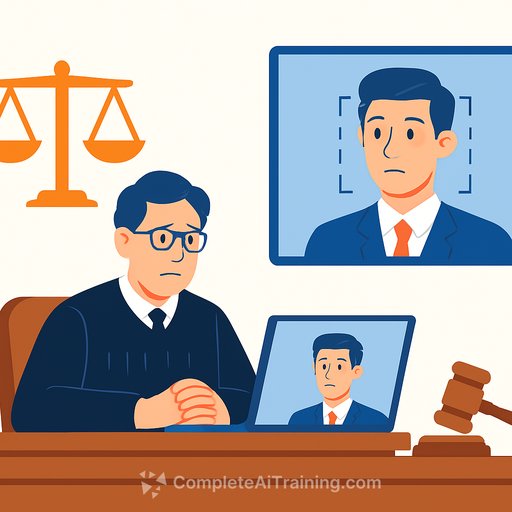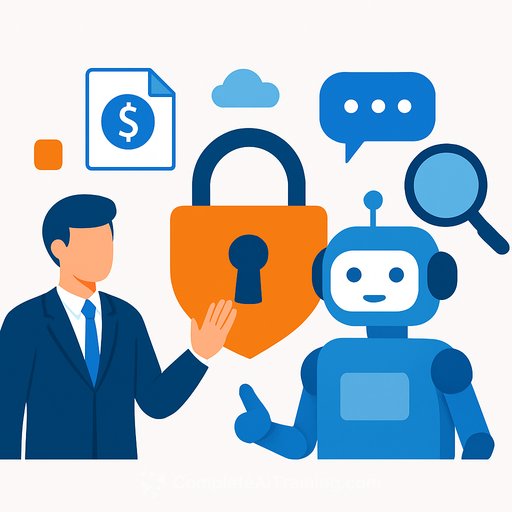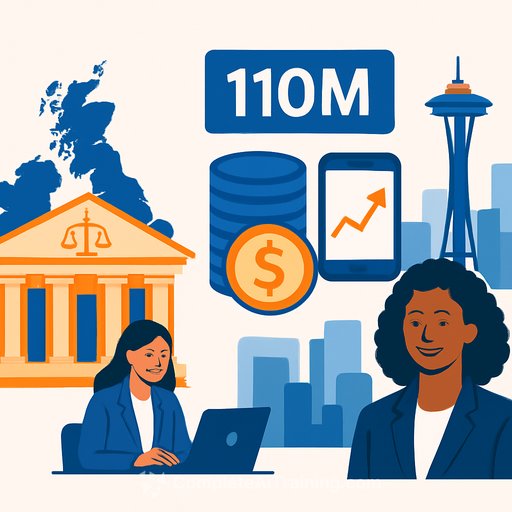AI-generated evidence is entering courtrooms. Judges say they're not ready.
Hyperrealistic videos, images, documents, and audio are now showing up in litigation. In a California housing dispute, a video labeled as real evidence was flagged by the judge as AI-generated and the case was dismissed. The court later denied a bid to reconsider. That moment signals a wider problem: synthetic evidence is no longer hypothetical.
Judges and legal experts warn that the credibility of core proof-video, audio, records-faces new stress. The concern is less about novelty and more about scale. Anyone with a phone can generate convincing fakes, and courts are built on trust that evidence is what it claims to be.
From the Liar's Dividend to forged exhibits
Courts have dealt with the "Liar's Dividend," where parties claim real evidence could be fake. This case flipped the script: AI content was submitted as if it were genuine. That's a different level of risk for fact-finding.
Judges across states are uneasy. One judge noted how a cloned voice could trigger a restraining order with immediate life impact. Another flagged how forged records could slip into official registries and then be admitted in court as routine proof. The shared worry: trusted sources may no longer be default-safe.
There's also an absence of centralized tracking. Judges report seeing suspicious media but lack a common repository to log incidents or patterns. That gap slows learning across jurisdictions.
Early playbooks, slow rules
A small group, including a consortium tied to the National Center for State Courts and the Thomson Reuters Institute, is pushing practical guidance. Bench cards advise judges to ask for origin details, chain of custody, who accessed the file, any alterations, and corroboration before admission. Interest is growing, but adoption is uneven.
Rulemaking remains cautious. Proposals to tighten authenticity standards or shift deepfake gatekeeping to judges were discussed but not advanced by the federal Advisory Committee on Evidence Rules. The sentiment: existing authenticity rules can handle AI-for now. The rulemaking cycle can take years, which is slow compared to AI's pace.
Some officials argue current law is sufficient, while also preparing for scenarios where it isn't. Meanwhile, states are experimenting. One recent law requires attorneys to exercise reasonable diligence to determine whether evidence they submit was generated by AI. That pushes responsibility upstream, before dubious files ever reach the bench.
What works in practice right now
Courts have tools today, even without new rules. The mandate is simple: verify aggressively.
- Demand provenance early: Who created the file? On what device? When? Who touched it and how? Get declarations that cover capture method, chain of custody, storage, and transfer.
- Interrogate metadata: Pull original files, not exported copies. Check creation and modification times, device model, OS/app versions, codec, and camera/lens data. Watch for mismatches (e.g., capabilities claimed that don't exist on the listed device model).
- Corroborate with independent data: GPS logs, cell-site records, vehicle telematics, door access, receipts, server logs. Divergent timelines or locations can sink a fake quickly.
- Control the pipeline: Prefer direct device extractions, hashes at collection, and read-only evidence repositories. Require parties to produce originals in discovery and explain any re-encoding.
- Scrutinize the pixels and audio: Look for unnatural blinking, mouth-sync drift, repetitive micro-expressions, inconsistent lighting or shadows, and room tone discontinuities. If needed, appoint a neutral expert.
- Use existing rules with intent: Apply authentication requirements and weigh prejudice versus probative value. Consider gatekeeping hearings for contested media before a jury ever sees it.
- Set expectations with counsel: Order certifications that counsel questioned clients about AI involvement and ran basic checks. If it "doesn't smell right," require further validation before admission.
- Document and share internally: Maintain a court log of suspected synthetic media incidents, outcomes, and effective methods. This helps build local knowledge even without a national repository.
Attorneys are the first line of defense
Lawyers cannot outsource authenticity to the court. Ask clients pointed questions about origin and handling. If a client brings ten photos, dig into where, when, and how they were taken. If the story is thin, pause and verify before filing.
Digital forensics still benefits from human judgment. Cross-check facts that an algorithm can't reconcile in context, like whether someone could have been in two places at once. One case turned on a simple mismatch between claimed device capability and actual metadata.
Technology signals are coming-unevenly
There's growing interest in device-level signing and capture authenticity markers. Those could help in the long run but won't arrive everywhere at once. Expect uneven access, uneven literacy, and fights over who pays for specialized verification.
Practical checklist to adapt your courtroom
- Adopt a standing order for media evidence that requires originals, metadata, and chain-of-custody details.
- Schedule pretrial conferences to flag contested media early and define testing protocols and neutral experts.
- Use targeted discovery for source files, devices, and third-party logs. Consider sanctions where parties stonewall on authenticity.
- Draft tailored jury instructions on the limits of digital media and the risk of fabrication, when appropriate.
- Create an internal bench quick sheet with telltale signs and standard questions for suspected synthetic media.
Bottom line
Courts have handled forged evidence before, but AI changes volume and believability. Treat digital media as contested by default. As one expert put it: "Don't trust and verify."
Helpful resources: Federal Rules of Evidence and the National Center for State Courts.
If your court or firm is building AI literacy for handling synthetic media and digital evidence, explore focused learning options here: Complete AI Training - Courses by Job.
Your membership also unlocks:




